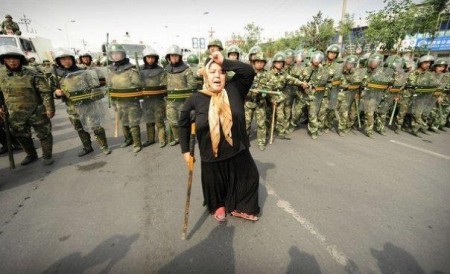
In the aftermath of the 2009 Han–Uyghur riots in Urumqi, the Chinese government made a number of changes to its policies in Xinjiang, including transferring out the region’s unpopular party chief. Since the arrival of President Xi Jinping, monitoring of Uyghurs in Xinjiang has intensified too.
But while a number of violent incidents were reported in Xinjiang in 2013, it is almost impossible to tell whether Uyghur-related violence is increasing in China. It is unclear whether the reporting of more incidents than in the past is due to actual increases in violence or simply new government media directives. The reports themselves are often uninformative. However, recent events, including the knife attack at Kunming, suggest that the Chinese government’s policies to counter Uyghur unrest are having unforeseen consequences well outside of Xinjiang. And the government is likely increasingly concerned that its post-2009 measures have been unsuccessful, given reported changes in policy toward Xinjiang.
The central government has doubled Xinjiang’s counter-terrorism budget and is reportedly considering introducing a regional counter-terrorism law for Xinjiang. The specific legality of measures to prevent and investigate terrorism has never been a huge concern for security forces in Xinjiang before, so it is likely that the new law, if passed, is intended as a signal for an even harsher direction that the government will take in combating separatism.
Several recent attacks also suggest Uyghur separatists are innovating in both targets and tactics. In October 2013, a vehicle apparently driven by a Uyghur crashed into a number of tourists in Tiananmen Square in Beijing and burst into flames, killing the car’s three occupants and two tourists, and injuring more than 30 others.
On 1 March, 29 people died and more than a hundred were injured in a knife attack by at least eight assailants at Kunming’s main railway station.
Clearly one aspect of the Chinese government’s counter-separatist policy is working: diplomatic overtures and rigorous control of Xinjiang’s borders with Central and South Asia have curtailed separatists’ ability to smuggle themselves weapons and explosives into Xinjiang. Harsh crackdowns on Uyghur separatist groups inside Xinjiang have also curtailed their ability to plan complex attacks. But these measures have not led to a cessation of violence. Rather, Uyghur-related unrest has increasingly taken the form of incidents that do not require firearms, explosives, or extensive planning and training.
These new types of attacks are likely to continue. The attacks in Beijing and Kunming used weapons — cars and knives — that are easily available to nearly anyone in any Chinese city. It will surely not go unnoticed to others that a relatively small number of people, using weapons that are both easy to obtain and difficult to detect, can kill and injure as many people as a very large car bomb. Nor did the attacks require the extensive (and more easily detectable) preparation of a car bomb or suicide explosive attack. While the knife attackers probably trained to coordinate their movements and maximise the effectiveness of their strikes, the car attack likely required little planning.
In a departure from previous violent incidents — which targeted Chinese government officials, Uyghur ‘collaborators’ and Han Chinese living in Xinjiang — the attacks also took place far from Xinjiang and against foreigners (although likely only incidentally) and Han Chinese uninvolved in the Han presence in Xinjiang. Moving far from Xinjiang not only had the effect of bringing the unrest to the doorsteps of Chinese who would otherwise view Uyghur separatists as a problem for other people in a remote province, it also avoided the intense scrutiny that would have accompanied Uyghurs’ movements had they stayed in Xinjiang.
In short, the attackers expanded the list of potential targets to all of China, and adopted tactics that are impossible to stop at the point of attack, short of barricading every public area and imposing physical searches on people entering every building.
So what will China do?
The extreme concentration and overbearing manpower of security forces in Xinjiang cannot be replicated everywhere else in China on a regular basis. And attacks that require limited planning are almost impossible to stop without extremely good intelligence.
But a softer touch — actual autonomy for Uyghurs in Xinjiang; a loosening of security constraints; state encouragement of Uyghur customs, language and especially religious practices; and economic development policies that do not rely on Han immigration into Xinjiang — is apparently off the table.
The increased security budget, combined with the continuing ignorance that the Chinese government exhibits about Uyghur groups that are actually planning violence, suggest that it will dial up its repressive strategy in a blunt and indiscriminating manner, both inside and outside of Xinjiang — a course of action that risks further exacerbating grievances.
Justin Hastings is a Senior Lecturer at the Department of Government and International Relations, The University of Sydney.
This article was originally published by the East Asia Forum on 11 March 2014.
For additional reading on this topic please see our personal dossier:
For more information on issues and events that shape our world please visit the ISN’s Weekly Dossiers and Security Watch.

